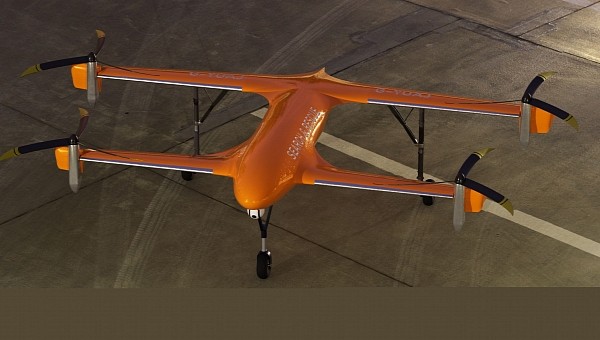The team at GKN Aerospace managed to design, develop, and test an innovative fueling system for unmanned aerial systems (UAS) based on liquid hydrogen in record time. The goal? To advance the safe implementation of environmentally-friendly solutions for search-and-rescue (SAR) missions.
It took only 12 months for the engineers at GKN Aerospace, specializing in sustainable and technically-advanced aero-components, to complete a demonstrator, from concept to full-build. The demonstrator was recently tested, in collaboration with Filton Systems Engineering, proving to be a success.
This process was part of the Safe Flight project, funded by Innovate UK. As its name suggests, the goal is to tackle the safety issues related to liquid hydrogen fuel systems for aviation.
Hydrogen could help increase the endurance of electric UAS for SAR operations, but since it’s still a relatively novel fuel, it comes with its own challenges. To address them, GKN designed the integrated fuel tank, then tested it by coupling it with a proton exchange membrane (PEM) fuel cell stack.
The tests had to determine whether the system would be able to provide hydrogen to the fuel cell system at the required temperature and pressure.
Also, this was tested for different electrical loads. The system used for this small-scale platform is set to be installed on future zero-emission SAR UAS. Safe Flight is just the beginning of the development of even larger and more complex aircraft using liquid hydrogen systems.
According to GKN, it will use the feedback from this recent test to continue the development of components and subsystems for hydrogen-based fuel solutions.
The Swedish company also leads H2Jet, a national collaborative program that develops subsystems for gas turbine-based hydrogen propulsion systems. Earlier this year, the company joined H2Gear, a collaborative program in the UK that focuses on hydrogen propulsion for sub-regional and regional airliners.
This process was part of the Safe Flight project, funded by Innovate UK. As its name suggests, the goal is to tackle the safety issues related to liquid hydrogen fuel systems for aviation.
Hydrogen could help increase the endurance of electric UAS for SAR operations, but since it’s still a relatively novel fuel, it comes with its own challenges. To address them, GKN designed the integrated fuel tank, then tested it by coupling it with a proton exchange membrane (PEM) fuel cell stack.
The tests had to determine whether the system would be able to provide hydrogen to the fuel cell system at the required temperature and pressure.
Also, this was tested for different electrical loads. The system used for this small-scale platform is set to be installed on future zero-emission SAR UAS. Safe Flight is just the beginning of the development of even larger and more complex aircraft using liquid hydrogen systems.
According to GKN, it will use the feedback from this recent test to continue the development of components and subsystems for hydrogen-based fuel solutions.
The Swedish company also leads H2Jet, a national collaborative program that develops subsystems for gas turbine-based hydrogen propulsion systems. Earlier this year, the company joined H2Gear, a collaborative program in the UK that focuses on hydrogen propulsion for sub-regional and regional airliners.







